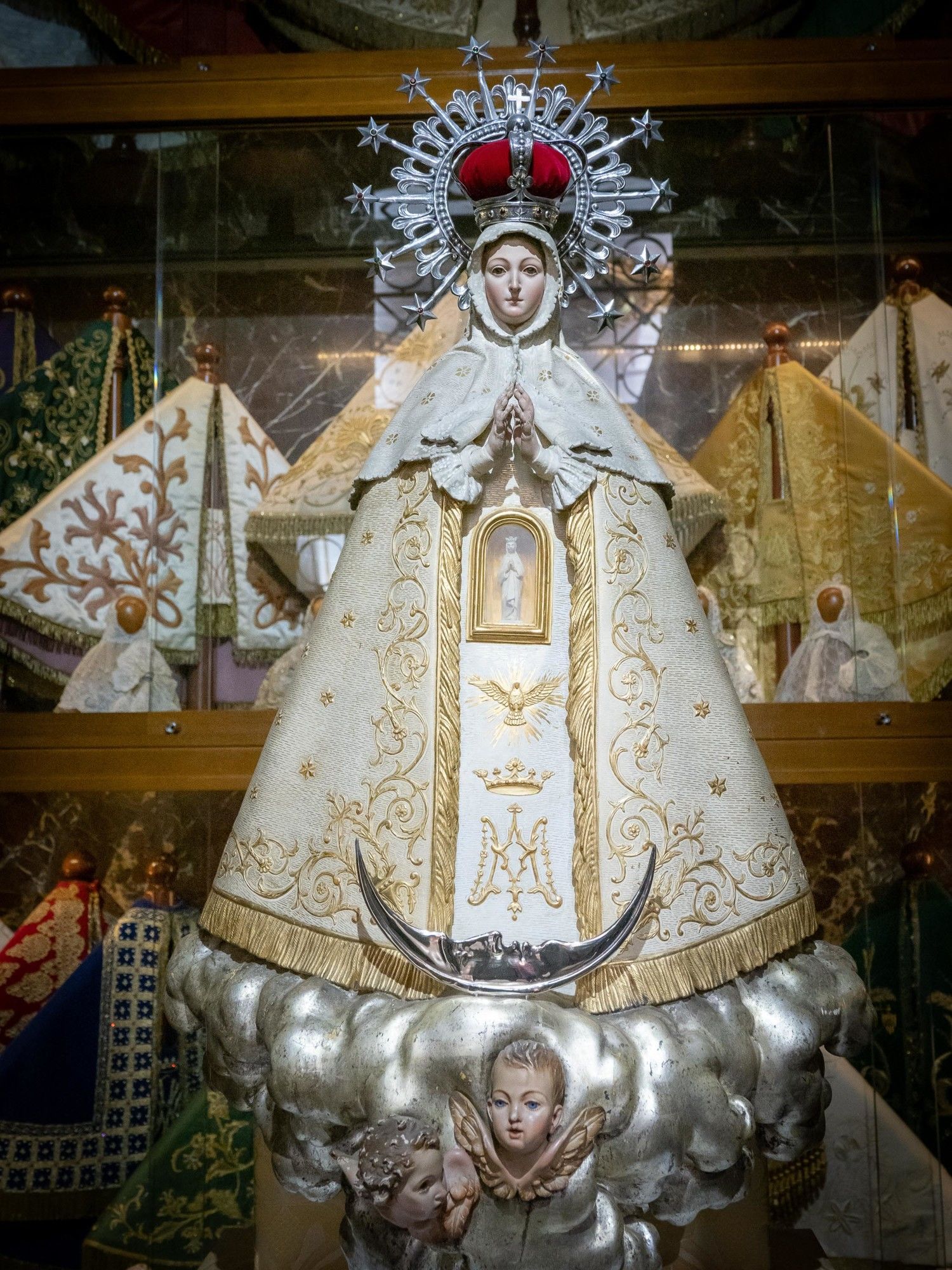
In 2003, the news of the appearance of an old image of the patron saint of Castellón in an antique shop on Calle del Mar in Valencia spread like wildfire in Lledonero environments. The Archivist of the Brotherhood notified the Governing Board of the Royal Brotherhood and its President, given the possibilities of the same, met with the councilor-attorney of the Basilica, Miquel Soler Barberá. After some inquiries and advice from art experts, on December 4, 2003, Councilor Soler, President Torres, Treasurer Fabregat and the chaplain of the basilica M. Francés moved to Valencia in order to acquire the cited image.
Upon arrival in the city, it was shown to the mayor and guarded in the office of the first local authority. A few hours later and due to the efforts of the councilor-attorney, the valuable and beautiful sculpture was generously sponsored by Mrs. Mariló Boera, who gave it to the Brotherhood of the Virgin.
The image, as it has been written, constitutes, apart from its sentimental and religious value, an invaluable testimony of the best local imagery of the 19th century, since it can be attributed with certainty to the workshop of the Viciano sculptors. It is a piece of wood about 80 cm high by 60 wide, carved, stuccoed, polychrome, gilded in water with a bowl base and fine gold leaf burnished with agate.
The "LLedonera" wears a one-piece silver crown and halo on its head, and the crescent at its feet, contemporary pieces of the image itself and of undoubted value and interest as works of goldsmithing of the time. But to greater surprise the Virgin appears documented in 1879, with a tiny date painted on her head, although hidden from view by the crown.
THE SCULPTOR TOMÁS VICIANO
"Tomás Viciano and Sons" was the title of a company that had a workshop for sculptors, gilders and incarnators on Magdalena Street in Castellón de la Plana. Today this street, near the Plaza de la Paz, has been called "Sculptor Viciano" since 1902.
The Viciano family, also known as "the santeros", because they were dedicated to producing images of saints, starts from the aforementioned Tomás Viciano Montó, who married Severina Martí Alegre. This marriage had eight children. Two of them, Francisco and José Viciano Martí (1855-1898), became famous as sculptors: Martí Alegre. This marriage had eight children. Two of them, Francisco and José Viciano Martí (1855-1898), became famous as sculptors.
The latter was the author of the statue of King Jaime on the avenue of his name, erected by will of the also prior of Lledó, Mossén Juan Cardona Vives. Another brother, Tomás Viciano Martí (1852-1904), following his father's example, dedicated himself especially to sculpting religious images and making wood carvings for the interior decoration of homes and businesses.
This of the Mare de Déu del Lledó is one of the few works that are known of the authorship of the founding master.
Works from the Viciano workshop and preserved to this day are probably the image of San Antonio de Padua and the Virgen del Lledó from the altar of the patron saints, both in the Cathedral of Santa María and a Virgen del Carmen in a private collection of the city.
At present it can be seen in the Cloacks room, at the entrance of the Basilica, and is popularly known as "the pilgrim", since it is the image that on special occasions visits the parishes of the city and other places, as well as well as annually the Literary Contest organized in his honor by the Royal Brotherhood.
Author: J.M.F. (Published in Bulletin nº 17 of 2004)
